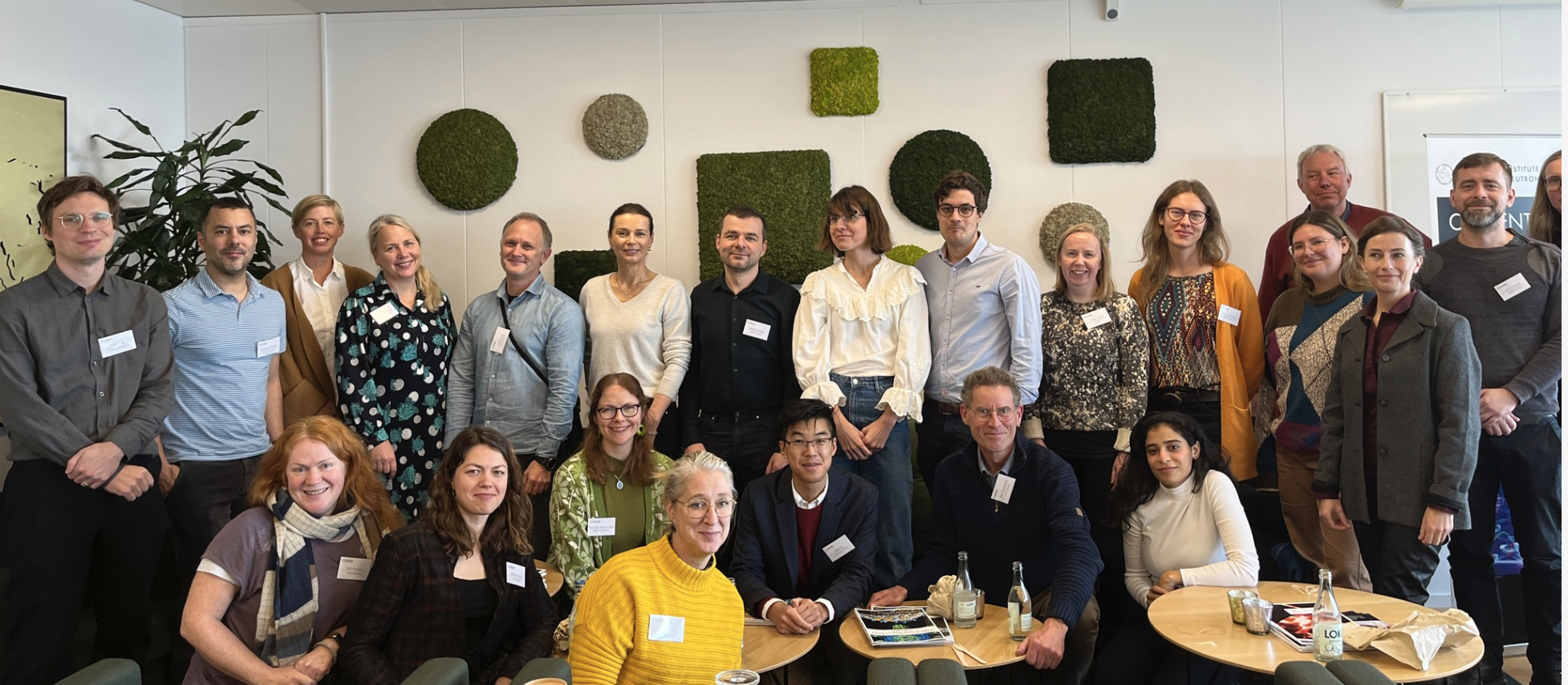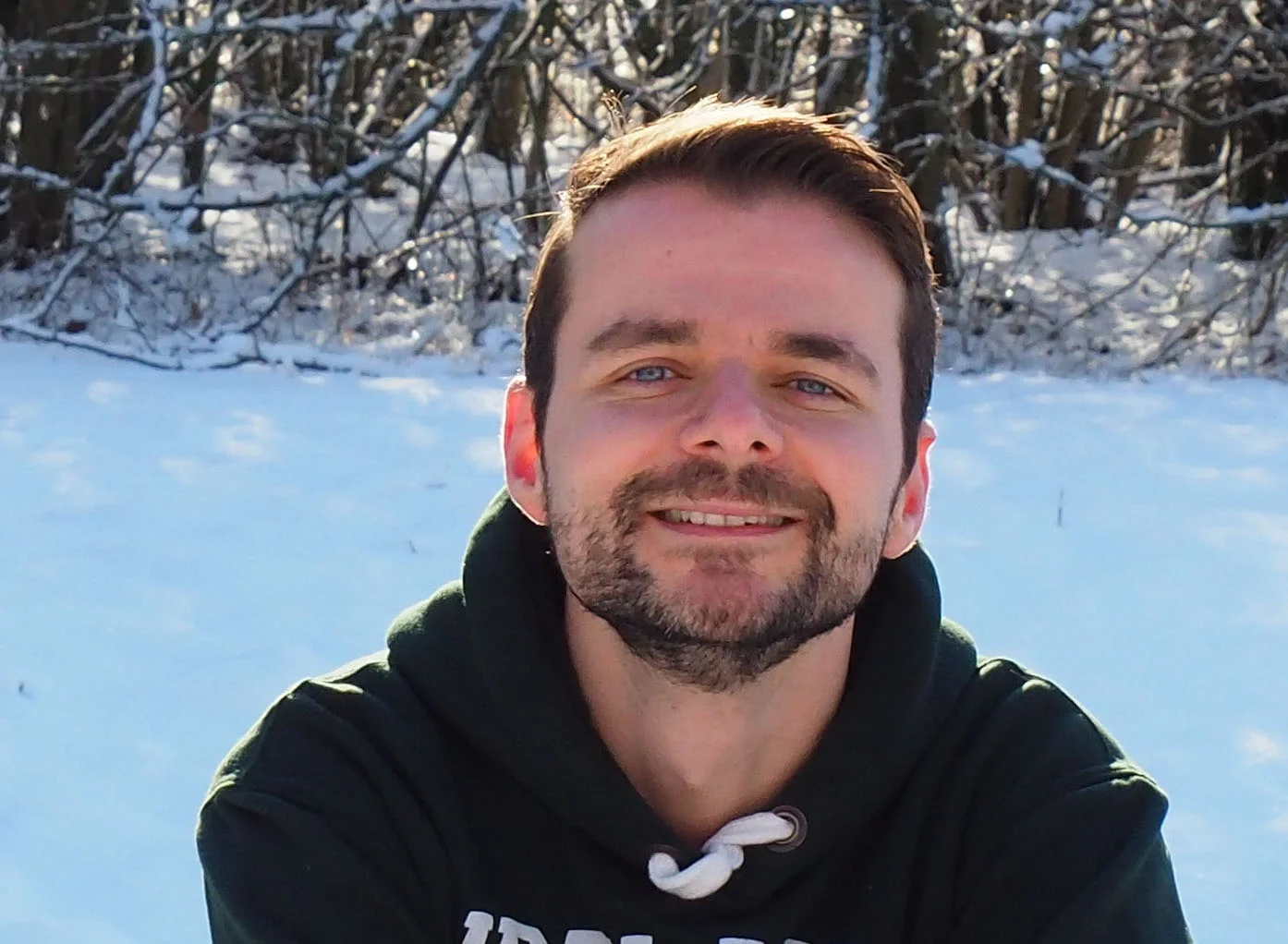The Environment and Climate theme is building on lessons learned from previous and current themes
The Environment and Climate theme pictured at LINXS during their kickoff in October.
To set up the theme for the best possible start, the Environment and Climate theme chose to highlight input from previous and current themes at LINXS at their kickoff in October. The aim was to take inspiration from what works, and to integrate lessons learned as the theme starts to plan its activities in detail.
Dimitrios Floudas is Associate Senior Lecturer at the Department of Biology at Lund University. and ECL theme leader.
Theme leader, Dimitrios Floudas, Associate Senior Lecturer at the Department of Biology at Lund University, and core group member, Helena Filipsson, Professor at the Department of Geology at Lund University, reflect that it was great to get most of the theme together for the first time, present the scope of the theme, and to make plans for the future.
Building on experiences from previous themes, they both see as a good strategy to facilitate successful activities. During the day, Professor Anna Stradner from the IPDD theme, project leader Selma Maric, who was part of the Northern Lights on Food theme, and Professor Elizabeth Blackburn, who is leader of the New Materials theme presented how they had worked and gave different advice. Kajsa Sigfridsson-Clauss, researcher at MAX IV also presented, and introduced the MAX IV environmental strategy.
Helena Filipsson is Professor at the Department of Geology at Lund University.
– Even though they are three very different themes, we learnt a lot from their feedback. For me, the advice to not be afraid of allowing the working groups to develop in different directions was food for thought. Since we are also quite different in our own theme, and have many working groups, this could be a good way forward, says Dimitrios Floudas.
Helena Filipsson adds that she came away reflecting on two things. One is that they should apply for grants during their time at LINXS, and the second is that they need to network, and popularise the theme as much as possible, in order to attract attention and increase opportunities for the theme.
– It is important that we start early to make a profile for what we do so we can make an impact and get to develop key research related to environmental sciences, says Helena Filipsson.
The core group will now consider how to best integrate some of the advice and ideas discussed at the kick-off in their future work. A concrete outcome is that each working group should develop a detailed agenda for what they want to accomplish during the theme duration. If possible, they should come together around some defined research questions, and work towards realising those.
Many activities are planned for the months ahead
Several theme activities are already planned, for example a LINXS cross theme workshop focusing on women in science on 8th March, and a two-day workshop on 25-26th April on the role of certain metals in organic matter mobilization and decomposition. This event is organised by working group three, Nutrient Cycles and Land-Water Interactions, and working group four, Structures and Environmental Interfaces. Working group one, Environmental Archives, is organising a hackathon/workshop with tomographic data and image analyses during spring 2024, and is also planning a PhD course with focus on electron backscatter diffraction, a scanning electron microscopy technique to characterise samples for synchrotron/neutron investigation in autumn. Another mission is to engage early career students in different ways, since it can be a big step to start working with X-ray techniques.
– I am excited to see what the next few months will bring. It was a great start to the theme, and very valuable to have us all in the same room! It will be interesting to see our progression in a year’s time, says Dimitrios Floudas.



